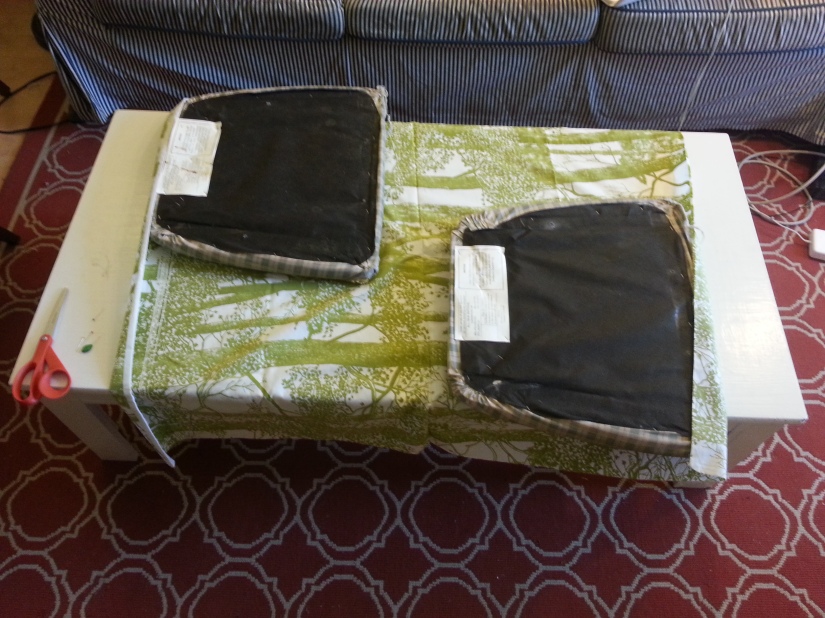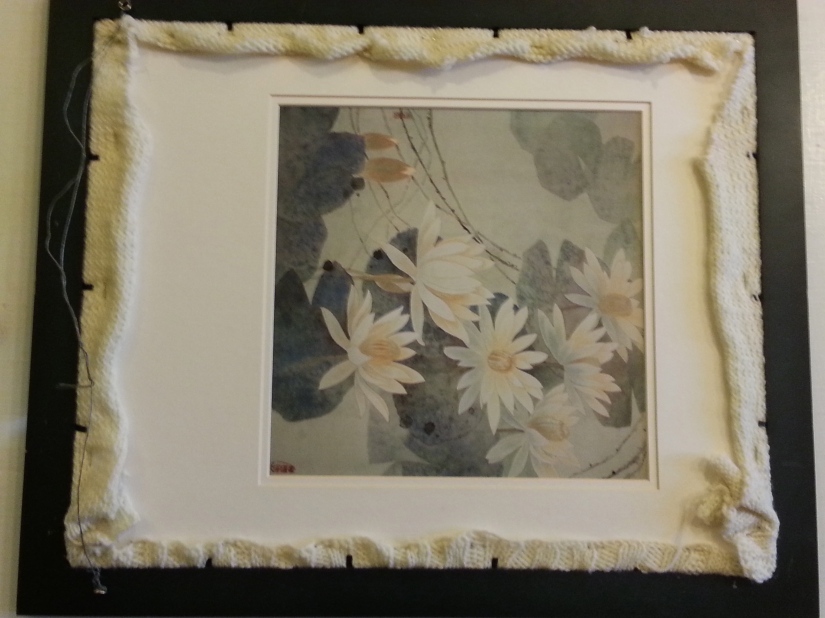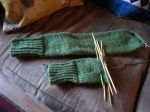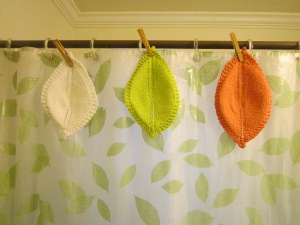If I came to your nuptials in the last 2 years, you got a hand-knit pillow inspired by nature as a wedding gift.
Pillows are underrated knit gifts. They’re nice for the knitter, because they knit up quicker than a garment, use up stash yarn with ease, and require no sizing other than a gauge that will work with your choice of pillow form. And they’re nice for the recipient, because they can be personalized and heartfelt while still being functional.
Since I already blogged about the Lovebirds Owl Pillow, I’ll focus on the two others.
Twinning Trees

Pattern: Twining Trees by Sarah Bradberry (Ravelry link)
Yarn: Cascade 220 wool, Spring Green (leftover from my Mrs. Darcy cardigan project)
I had this beautiful pattern in my Ravelry queue for 5 years, just waiting for the right project! I love the intertwined cables— so fitting a gift for two people growing together.
I made this for J + K’s wedding, which took place at a Northern California winery and was just as green and beautiful. But the actual inspiration for the pillow was a road trip through Oregon this summer, with plenty of passenger seat time to work though all those cables. Despite the wildfire smoke, we saw lush greens everywhere.
I have found that the best backing to a knit pillow is a repurposed sweater! This one was a green sweater tank in a matching shade. I pinned and cut two pieces to over on the reverse side, making it easy to slip it off the pillow form and wash it.
It’s a little tricky to sew through both pieces on my sewing machine, but the results are worth it.
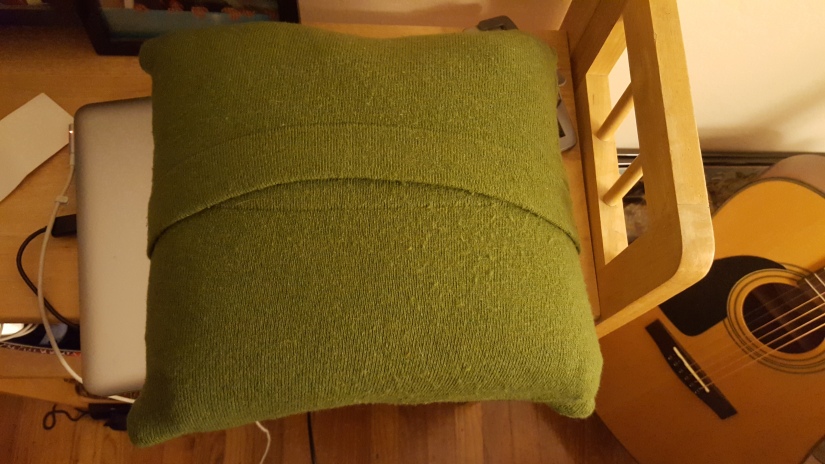
Bonus knit! J+K also requested quilt squares from guests for a wedding quilt, so of course I incorporated some knitting there too! My square was inspired by a summer afternoon of cherry picking that we had all recently enjoyed.
I used the “how to knit a flat circle” ravelry tutorial for this one, which I highly recommend.
Joshua Tree

Pattern: My original design!
Yarn: All stash yarns—gray wool/mohair blend from stash, brown wool from my Owl Mittens, green from my repurposed Argyle Wall Hanging, and beige from my Katniss Cowl.
When I heard that A+M were getting married in Joshua Tree National Park, I knew what was going on their pillow! Only trouble was, no such pattern existed! Cactus, sure, but no Joshua trees. I hadn’t been to the high desert for years, and couldn’t even remember if I’d seen one, so I looked at photos for inspiration to start. I eventually got to see the real thing! They were just as weird and majestic as I imagined—even more so at twilight.
I originally sketched a Joshua tree with many branches, but I had to scale it back to three for simplicity’s sake. I opted to keep the tree to one side, giving me room to add their initials and the year. If you make a pillow like this, take the time to sketch it out on a grid, to get an idea of the layout!

Intarsia knitting worked best for this kind of colorwork, although I also did some stranding between the branched and the letters & numbers. I know that many knitters shy away from colorwork, but pillows are a perfect test project! It doesn’t have to stretch over a body or a head, so you can practice getting the right tension. Here’s the front and back of the complete piece.


After poring over too many stitch dictionaries, I decided the easiest way to approximate the long pointy leaves was to do a crochet chain embroidery stitch on top of the completed work. That way, I could control the angle and give the tree a three-dimensional look. I followed a simple video tutorial (here) since crochet is not my forte.

And of course, I used a gray sweater as a backing. This time, I chose a cardigan, so I could incorporate the buttons for easy removal.
 I am quite happy with the way this pillow turned out. The muted color palate captured the feel of the high desert, and it matched A + M’s home decor!
I am quite happy with the way this pillow turned out. The muted color palate captured the feel of the high desert, and it matched A + M’s home decor!

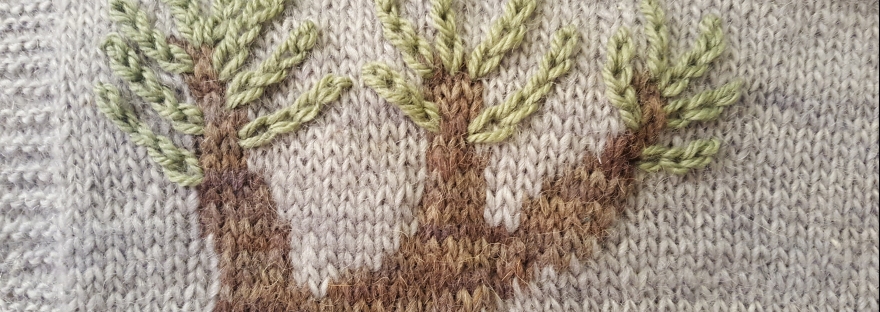












 Last weekend was Tour d’Davis, where my flock and I celebrated this costumed bicycle tour of town with our “yarnbombed” bikes. I am particularly proud of creating this countryside scene for my top tube, complete with sheep grazing on the hillside and a matching pouch for my cellphone. The entire thing is my own design. I call this cozy pattern Pastoral.
Last weekend was Tour d’Davis, where my flock and I celebrated this costumed bicycle tour of town with our “yarnbombed” bikes. I am particularly proud of creating this countryside scene for my top tube, complete with sheep grazing on the hillside and a matching pouch for my cellphone. The entire thing is my own design. I call this cozy pattern Pastoral. If you want to do this project on your own bicycle, you’re in luck—it has a very low baaaa-r to entry. All yarn used here was leftover from other projects:
If you want to do this project on your own bicycle, you’re in luck—it has a very low baaaa-r to entry. All yarn used here was leftover from other projects:








 We searched through
We searched through 



















